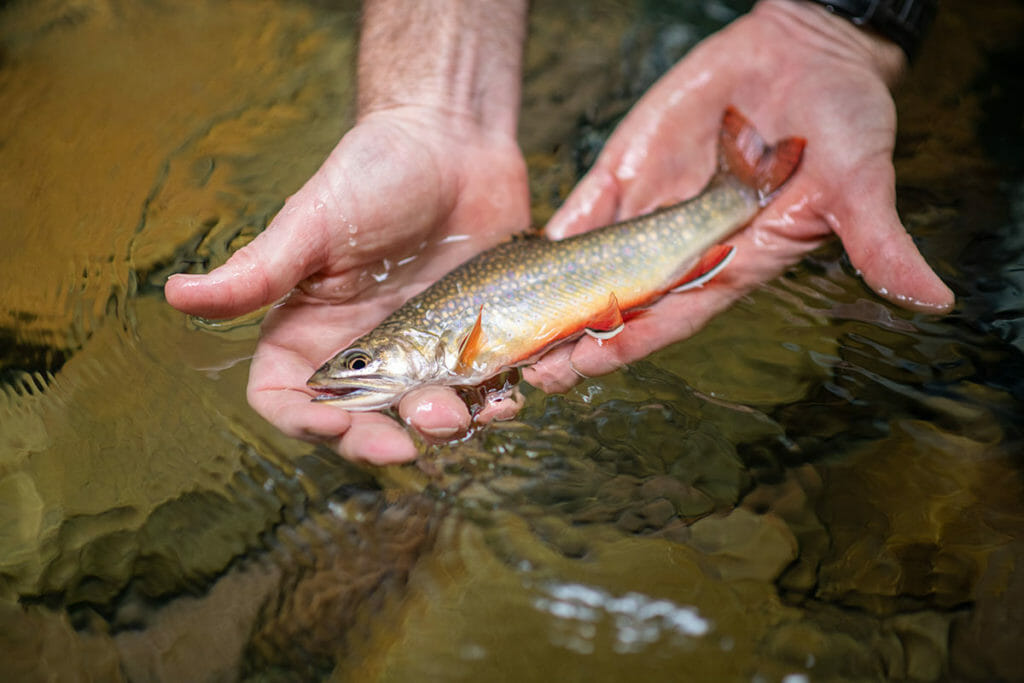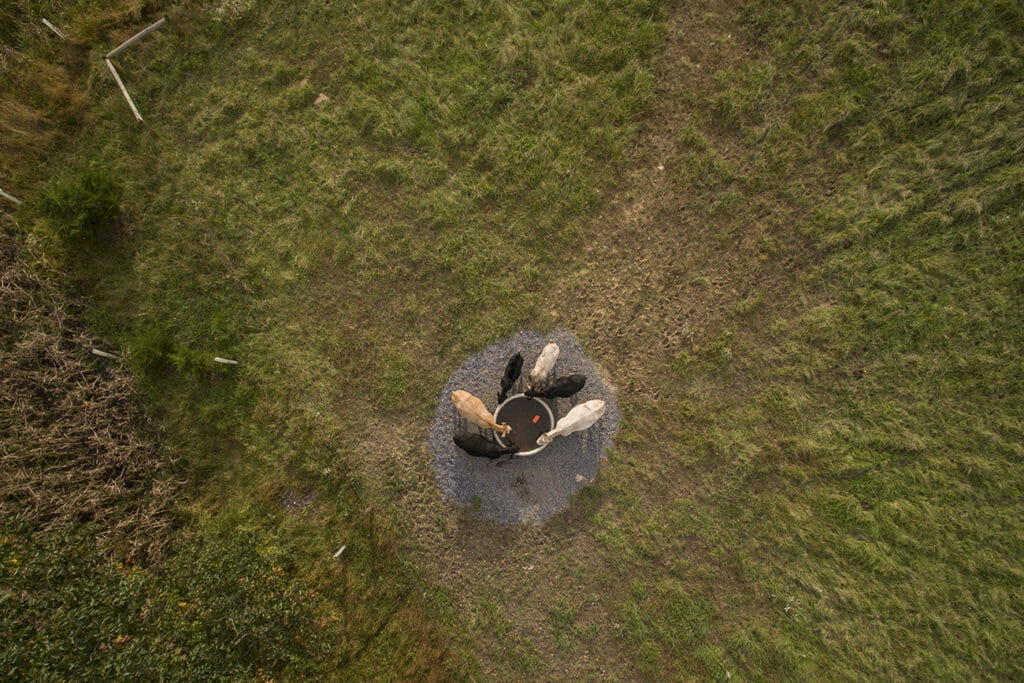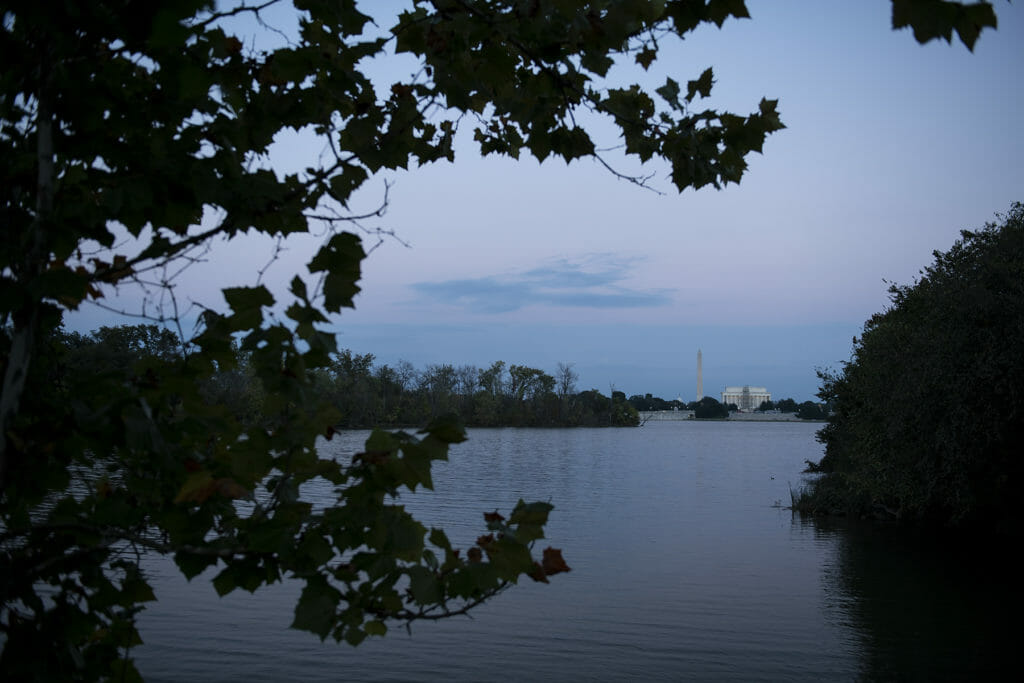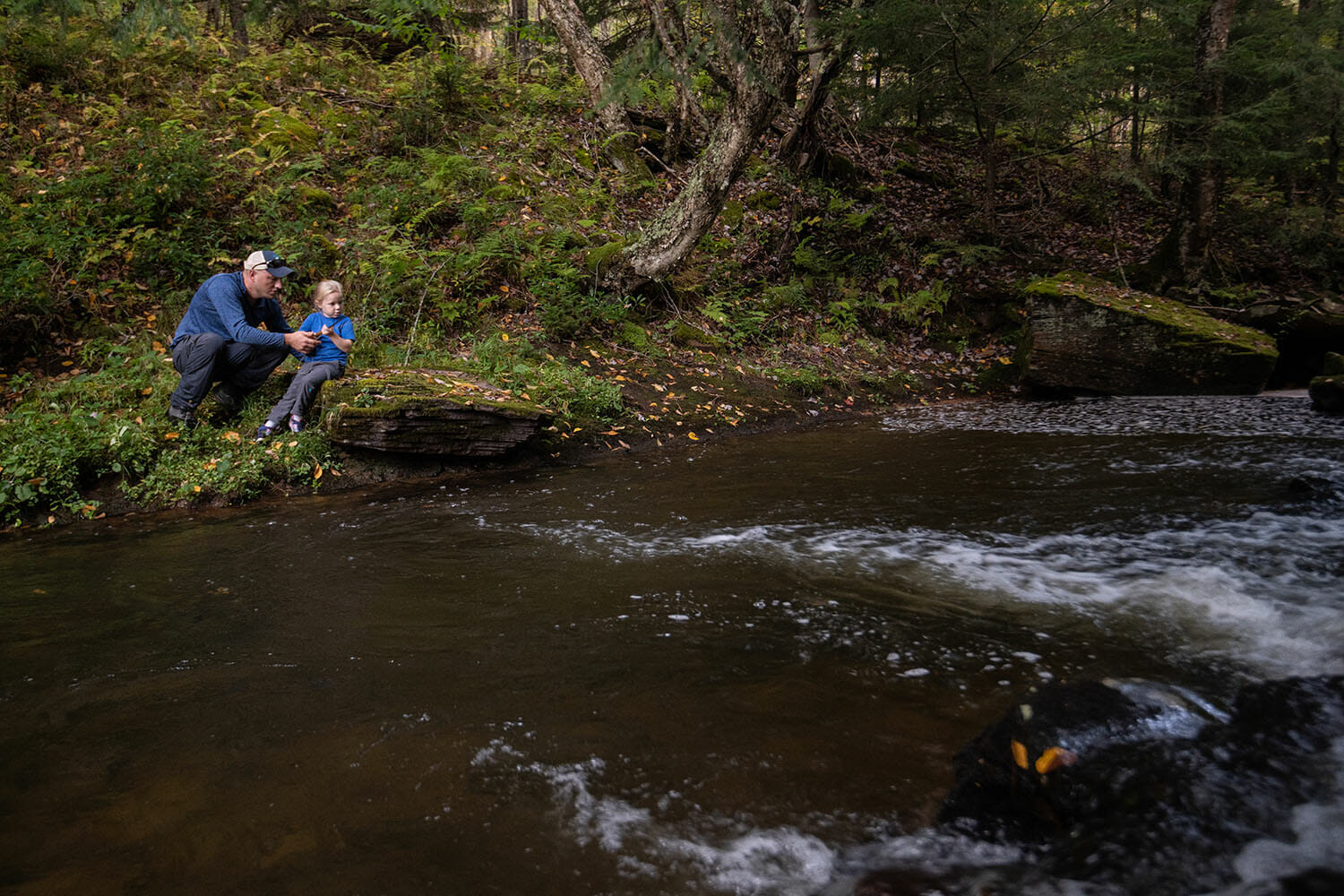Dustin Wichterman lives trout.
By day he manages Trout Unlimited’s restoration and protection work in the Potomac headwaters.
Most of the rest of the time he’s either fishing for trout or dreaming about fishing for trout.
And a big part of that dream is that one day the Potomac headwaters will again regularly churn out native brook trout pushing the mythical 20-inch mark, something that was a reality before man’s impact degraded many of the region’s streams.
TU’s work in the headwaters of the Potomac, a major Chesapeake Bay tributary whose watershed provides drinking water for roughly 12 million people, is helping to move that dream closer to reality.
Those efforts and goals are the focus of a new Trout Unlimited short film, “A Nation’s River.”
The 11-minute production highlights work TU is doing where the Potomac is born, high in the mountains of Virginia and West Virginia, where TU and many partners are improving habitat in and along trout streams.
In the film, Wichterman (pictured at top with daughter Brooklyn fishing a brook trout stream in the Monongahela National Forest) poignantly says that his priority is make things better for his young daughter, a frequent companion on is fishing outings.

“My personal mission is one that aligns with Trout Unlimited’s,” says Wichterman, who grew up in West Virginia’s coal country. “And that is to leave my daughter with a better place than I had growing up.”
In addition to segments on projects in West Virginia, the film highlights efforts in Virginia’s mountains and valleys, where TU staffer Seth Coffman oversees work in the Shenandoah River headwaters outside of Harrisonburg.
One of those streams is Mossy Creek, one of the state’s most popular trout fisheries.
The project work is happening on both public and private lands.
In West Virginia, for example, Trout Unlimited has partnered with more than 400 farmers on projects that include stream restoration, the removal or improvements of barriers that block fish movement, and enhancement of riparian buffers.

Teams have installed nearly 2 million feet of fencing to keep cattle out of streams, installing alternate water sources for the livestock.
The erosion-reducing work not only helps landowners by preserving their streamside land, but also translates to better quality water feeding the Potomac River itself.
The work is made possible by funding through National Resources Conservation Service programs, the U.S. Fish and Wildlife Service and other federal sources.
Trout Unlimited also works with the U.S. Forest Service on adjacent public lands on the Monongahela, George Washington and Jefferson national forests.
Improvements are leading to more robust trout populations in mountain streams, which is spurring increased angling interest and more fishing-related tourism.

Award-winning journalists Josh Duplechian and Mark Taylor produced the film. Duplechian is the organization’s senior producer while Taylor is TU’s eastern communications director.
The pair spent 10 days afield with Wichterman and other TU staffers in the fall of 2018 gathering footage and interviews.
The film premiered in early April at a meeting of the Angler’s Club of New York. The final version is now available on Vimeo via TU.org/nationsriver.



